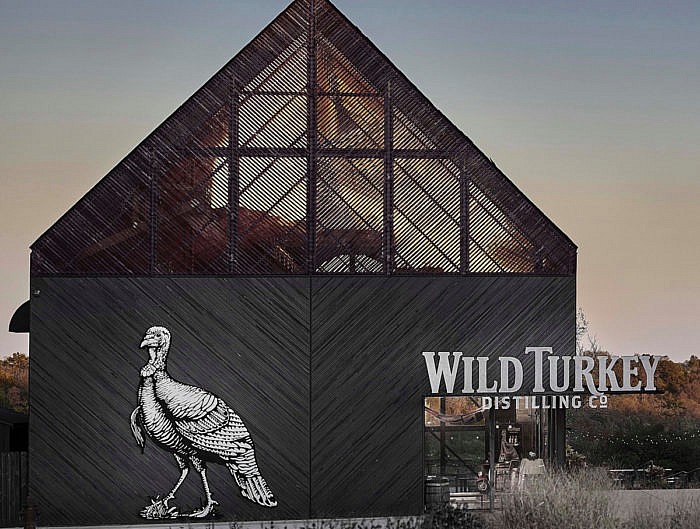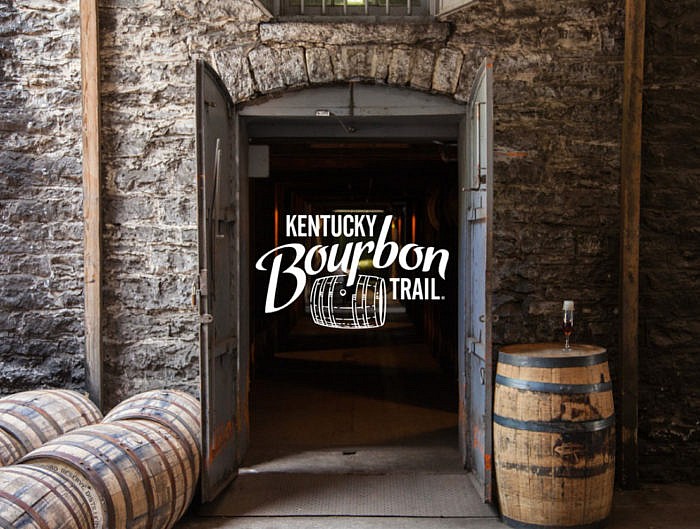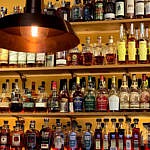We have compiled a comprehensive glossary to help our readers get up to speed on their brown water. Check back often as we are always adding to this list.
UPDATED – 12/20/2022 – Have something to add? Please send an email over to [email protected]
A
ABV: Alcohol by volume; the measure of how much alcohol is contained in a given volume of liquid, expressed as a percentage.
Age: Often this is used as a measure of quality. It is not always dependable, however, because ingredients are a factor.
Age statement: The number of years that a distilled spirit has been stored in oak containers prior to bottling, as stated on the bottle. An age statement is required for American whiskies aged less than four years. This also applies to blended whiskies if the youngest whiskey in the blend has been aged less than four years. The age statement must state the youngest whiskey in the blend.
Aging: The process of letting whiskey mature in oak barrels picking up additional flavors of the wood. Once it is bottled no further aging takes place.
Alcohol Integration: The extent to which the alcohol in a whiskey carries other flavors to the palate, rather than serving as a flavor in and of itself.
Angels’ Share:The portion of Bourbon in an aging barrel that’s lost to evaporation.
B Backset: The thin, watery part of a previously distilled batch of whiskey mash that is added ‒ or “set back” ‒ into the next batch. Also “sour mash, setback, stillage or spent beer.”
Barrel: A general term for a type of wooden cask used in the storage and maturation of whiskey. A standard bourbon barrel measures 200 liters, or 53 gallons. See also Cask.
Barrel Proof: Whiskey bottled at the desired proof while aging in the barrel. No water is added before bottling, so these Bourbons are higher proof than others. Also referred to as Barrel Strength or Cask Strength. TTB regulations require “barrel proof” whiskey to be bottled at not more than two degrees lower than the proof established at the time the spirits were gauged for tax determination.
Beer: Also known as wash. The alcoholic liquid that is transferred into the still.
Beer still: A large apparatus in which the main component is a very tall metal column used to separate the alcohol from the water in the distiller’s beer by vaporizing the alcohol content. Also called a “continuous still.” The spirit produced is called “low wines.”
Blended Whiskey: A combination of two or more spirits. A blended whiskey must contain at least 20% straight whiskey or a blend of straight whiskeys, while the remainder can consist of non-straight whiskey, neutral spirits, or both.
Bottled-in-Bond: Bottled in bond is a label for an American-made distilled beverage that has been aged and bottled according to a set of legal regulations contained in the United States government’s Standards of Identity for Distilled Spirits, as originally laid out in the Bottled-in-Bond Act of 1897. As a reaction to widespread adulteration in American whiskey, the act made the federal government the guarantor of a spirit’s authenticity, gave producers a tax incentive for participating, and helped ensure proper accounting and the eventual collection of the tax that was due. Although the regulations apply to all spirits, most bonded spirits are whiskeys in practice.
To be labeled as bottled-in-bond or bonded, the liquor must be the product of one distillation season (January–June or July–December) by one distiller at one distillery. It must have been aged in a federally bonded warehouse under U.S. government supervision for at least four years and bottled at 100 (U.S.) proof (50% alcohol by volume). The bottled product’s label must identify the distillery where it was distilled and, if different, where it was bottled. Only spirits produced in the United States may be designated as bonded.
Bottling Proof: The proof or level of alcohol content, at which a whiskey goes into the bottle for consumption.
Bourbon (straight): A whiskey made from a mash containing at least 51 percent corn, distilled out at a maximum of 160° proof, aged at no more than 125° proof for a minimum of two years in new charred oak barrels. If the whiskey is aged for less than four years, its age must be stated on the bottle. No coloring or flavoring may be added to any straight whiskey. Bourbon may be produced anywhere in the United States; however we are partial to Kentucky.
Brewing: The process of mashing grain in hot water and fermenting the result with yeast to produce wash or beer.
Bung: The stopper used to seal a barrel.
C Canadian Whiskey: The distinctive national whisky of Canada, containing a high percentage of rye, and includes barley, corn, and wheat. The Canadian whiskey sold in the U.S. is at least four years old. Lighter than American whiskey, it is sold at 80 proof.
Charring: The process that sets fire to the interior of barrels for less than one minute and creates a layer of charred wood. Distillers can choose from four levels of char.
Cask: A general term for tall types of oak containers used in the storage and maturation of Whiskey. See also Barrel.
Cask Strength: Refers to whisky that’s bottled at or very near the alcohol strength at it emerged from the barrel at the end of maturation, undiluted by added water. See also Barrel Proof.
Char Level: Before whiskey goes into the barrel, the oak barrels are charred in order to allow the flavors of the wood to more readily transfer to the liquid. The longer the flame touches them, the higher the char level.
Charcoal mellowing: The act of filtering unaged whiskey through maple charcoal before going into the barrel. This is a requirement for Tennessee Whiskey also known as the Lincoln County Process.
Charring: The act of burning the inside of a barrel as part of the coopering process. The amount of char impacts the color and flavor of the resulting aged whiskey.
Chill Filtration: Typically done for cosmetic reasons — like clarifying a spirit to eliminate cloudiness and residue — this is a process by which whiskey is cooled to between -10° and 4° Celsius (14° and 39.2° Fahrenheit) and then fed through a fine adsorption filter. Many whiskey brands have been avoiding this process in recent days so as to preserve the overall integrity of their offerings.
Cooper / Cooperage: A “cooper” is a person whose profession lies in the creation or repair of barrels and casks. A “cooperage” is the facility in which a cooper performs his or her work.
Column Still: Patented still design in 1830 by Aeneas Coffey to keep up with demand, this was the cheaper and faster alternative to the pot still. It is capable of continuous distillation by reheating the liquid, rather than requiring distillation in batches, and can produce higher ABV spirits than pot stills. The device consists of two columns which contain a number of compartments separated by heated plates. The plates are perforated with small holes to permit the upward passage of steam and spirit vapor, which is condensed to become spirits. This is also often referred to as a continuous still or Coffey still.
Condenser: A component in the distillation apparatus that converts the spirits from a gas to a liquid through cooling, either as a coiled tube submerged in a tub of water or a vertical tube through which water is piped.
Congeners: Chemical compounds produced during fermentation and maturation. Congeners are the natural flavor constituents in spirits. They are traces of oils, esters and acids carried through the distillation process and into the distillate. Spirits distilled at lower proofs have the highest congeneric content. High proof neutral spirits are practically free of congeners. Their presence in the final spirit must be carefully judged; too many would make it undrinkable.
Corn: A grain used in spirits production. Corn is the primary grain in bourbon whiskey, required to represent at least 51% of the mashbill.
Corn whiskey: A whiskey made from a mash containing a minimum of 80 percent corn and, if it is aged at all, must be aged in used or uncharred oak barrels.
D Distillation: The process of separating the components in a liquid by heating it to the point of vaporization, then cooling so it condenses into a purified form.
Distiller’s beer: The thick, fermented mash of cooked grains, water and yeast that is transferred from the fermenter to the beer still for the first distillation.
Distillery: A place where a spirit is manufactured.
Doubler: A large copper still used to accomplish the second distillation of American whiskey. It effectively removes impurities and concentrates the alcohol even further. “Low wines” go in; “high wines” come out.
Dram: A Scottish term for a glass of whisky; or a measurement equal to 1/8 fl oz.
DSP Number: A distilled spirits producer (DSP) number is assigned to a facility when it receives the US federal permit to operate as a distillery, or some other business that handles or bottles distilled spirits, and includes the state along with an assigned number.
F Fermentation: The process by which yeast transforms sugar into alcohol and carbon dioxide.
Fermenter: A giant tub made of metal or cypress in which the mash of cooked grains and water meet the yeast. They mingle, the yeast begins to act on sugars in the grain, and fermentation occurs over a few days. This produces alcohol within the mash and turns it into distiller’s beer.
Finish: The aftertaste that lingers on the palate after consuming whisky. This is described both in terms of flavor characteristics and length. Can also refer to the process of cask finishing, where fully mature whisky is transferred from its original maturation cask to a different cask, usually for a short period of time, with the intention of imparting specific flavors onto the final product.
Finishing: The procedure that some whiskys undergo where the spirit is matured in a cask of a particular origin and then spends time in a cask of different origin (from a couple of months up to the entire maturation[citation needed]) Typically, the first cask is an American oak cask formerly used to mature bourbon. The second cask may be one that has been used to mature some sort of fortified wine, often sherry, though sometimes casks for port, madeira, or even red burgundy or chardonnay are used. (also known as double matured or wood-finished)
Flavor Profile: The range of flavors and aromas that make up the overall taste of a whiskey.
Foreshots/Feints: “Foreshots” refers to the first vapors to burn off during the process of distillation — often containing dangerous volatile alcohols, such as methanol. “Feints” refers to the unfavorable remnants left after the tail end of a distillation run and are often returned to the still for later batches.
G Grain: The seeds of a cereal crop such as corn, rye, wheat, barley, etc.
Grain Neutral Spirits: Alcohol distilled from grain at 190 proof. Contains no noticeable aroma, flavor or character.
H Heads: The first section of the high wines to exit the doubler or thumper; this spirit is high in impurities and sent back to the still for redistillation.
High Rye: Refers to a bourbon containing a large percentage of rye in the mashbill—often around 20-35%.
High wines: The final spirit produced by the secondary distillation, ready for aging.
I Irish Whiskey: The distinctive national whiskey of Ireland. Most Irish Whiskey is a blend of several whiskeys of different ages. Malted barley, unmalted barley, and other grains such as rye and corn are used. It is heavier than Scotch and usually 86 proof.
L Lincoln County Process: A technique used in the production of Tennessee whiskey. The unaged spirit is filtered through sugar maple charcoal before going into the barrel. See also Charcoal mellowing.
Low wines: The name of the spirit after it has passed through the beer or continuous still for its first distillation.
M Malt Whiskey: Whiskey made purely from malted barley.
Malted barley: Barley that has been partially germinated and then heated or roasted to stop the germination. Malted barley (or any malted grain) contains enzymes that convert starches into the fermentable sugars on which yeast feeds. These enzymes are not present in unmalted grains.
Marrying: A period after blending and before bottling when the whisky rests, often in a neutral vat. Marrying is not a requirement, but some producers believe it results in a better integrated whisky.
Mash: The mixture of cooked grains and water before the yeast is added to start fermentation.
Mashbill: The grain recipe used to make whiskey.
Mash tub: A large tub where the grains are combined with water and cooked to soften them and break down the starch into simple sugars before the resulting “mash” is transferred to the fermenter. Also called a “cooker.”
Maturation: The process by which a spirit changes as it spends time in a barrel. This process fundamentally alters the taste profile of the spirit, imparting character from the barrel, as well as reducing the sharper characteristics of the distillate. Nearly all whiskies are aged in wood—usually oak—containers.
Moonshine: Distilled spirits produced in an unlicensed, unregulated still and without payment of taxes, and hence, illegal. Seldom aged, and produced from anything that will ferment, moonshine is often a health hazard.
Mouthfeel: The perception of viscosity, texture, and other sensations in the mouth used as descriptors in tasting.
N NAS: Stands for “no age statement” or “non-age statement.” Whisky that does not make a claim as to how long it has been aged, though it must still meet minimum legal requirements where applicable. Due to whiskey’s growing popularity and the long lead times required to produce aged stock, NAS offerings are increasingly common.
Neat: Serving spirits without the addition of ice, water, or other mixers.
Non-Chill filtered: Whiskey that has not undergone chill filtration, which consists of being cooled and passed through a filter to remove particles that would affect its cosmetic appearance. Whiskies that do not undergo this process often advertise that they are non-chill filtered and may have some cloudiness when chilled or when water or ice is added.
Non-Distiller Producer: A producer that does not distill, but instead purchases whisky from a distillery to sell under its own brand name. Often abbreviated as NDP.
Nose: The aroma of a spirit; or the act of smelling a spirit.
O Oak: An acorn-bearing tree and the primary source of lumber used in the creation of whiskey barrels and casks.
On the rocks: Serving spirits with ice cubes.
Oxidation: An essential part of the whiskey tasting process, this references what happened to a given alcoholic liquid once it is exposed to ambient oxygen. It is widely understood that, for a whiskey to achieve its true potential regarding its flavors and aromas, exposure to oxygen is an absolute necessity. It’s worth noting, however, that oxidation starts as soon as a bottle is opened and will continue, even if you re-cork it. Thusly, over time, oxidation can negatively impact the flavors of a whiskey.
P Palate: A drinker’s complete sense of taste.
Pot Still: Stills used for batch distillation. In pot still distillation the liquid is distilled usually twice, occasionally three times, first in a wash still and then in a spirit still.
Production Statements: This is a requirement that all bottle labels say “Bottled by” followed by the company that put the whiskey in the bottle. This can be modified to “Produced and bottled by”, “Made by”, “Handmade”, “Crafted”, and “Handcrafted”, etc. None of these statements necessarily mean that the company fermented, distilled, aged, and bottled the whiskey, only that the company took whiskey barrels and bottled the contents. If you prefer drinking whiskey that was made by a particular distillery, look for the words “Distilled, and bottled by” – some have taken this a step further to include “Fermented, distilled, aged, and bottled by” on the label.
Prohibition: National Prohibition in the U.S. ran from January 1919 through December 5, 1933. During that period, beverage alcohol could not be legally produced, transported, or sold. Limited exceptions were for medical purposes.
Proof: Measurement of beverage alcohol on a scale, in America, of 200. A 100° proof spirit contains 50 percent alcohol.
R Ricks: The wooden structures on which barrels of whiskey rest during aging.
Rickhouse: The building in which whiskey is aged. Also referred to as the warehouse or rackhouse.
Rye whiskey (straight): A whiskey made from a mash containing at least 51 percent rye, distilled out at a maximum of 160° proof, aged at no more than 125° proof for a minimum of two years in new charred oak barrels. If the whiskey is aged for less than four years, its age must be stated on the bottle. No coloring or flavoring may be added to any straight whiskey.
S Scotch Whisky: The distinctive national whisky of Scotland. Single Malt Scotches are made entirely from malted barley and are the product of a single distillery. Blended Scotch Whiskies are a mixture of several different malt whiskys, plus grain whisky. The smoky flavor comes from drying malted barley over peat fires. Exported Scotch is at least four years old and is usually 80 to 86 proof.
Single barrel whiskey: Whiskey drawn from one barrel that has not been mingled with any other whiskeys.
Small batch whiskey: A product of mingling select barrels of whiskey that have matured into a specific style.
Solera: A maturation process that involves partial emptying and refilling of casks to achieve an unbroken lineage of fractional blending. The practice comes from the sherry production process but has been increasingly used by distillers.
Sour Mash: Like sourdough bread that uses a “starter” from the previous day’s dough, this process provides uniformity in bourbon production. A portion of the previous day’s mash is added to new mash to ensure consistent quality and character.
Sourced: Refers to whiskey purchased from a distiller by a third party and then bottled as a distinct brand. May be blended with other whiskies.
Spirit Safe: A locked box with a glass front that allows the distiller to watch the spirit leaving the still, measure certain characteristics, such as ABV and temperature, and divert the emerging spirit to different locations as needed. Originally conceived in Scotland to ensure all production was accountable for taxation and prevent illicit sampling.
Still: The container in which the distiller’s beer is purified by means of heating the liquid to at least 176 degrees Fahrenheit, but less than 212 degrees Fahrenheit. Because alcohol boils at a temperature lower than water, the alcohol can be evaporated, collected, and condensed.
Straight Whiskey: Refers to American whiskey made from a grain mash, distilled to no more than 80% ABV, and aged for at least 2 years after entering the barrel at an ABV of no more than 62.5%. The only modifications allowed are the addition of water and mixing whiskeys from different barrels—no flavoring or colorants may be added. Straight whiskey can be a blend of different straight whiskeys, as long as they are from the same state. If any whiskeys from the blend are less than 4 years old, an exact age statement is required on the bottle.
T Tails: The last section of high wines to exit the doubler or thumper; this spirit is high in impurities and sent back to the still for redistillation.
Tennessee Whiskey: Straight whiskey distilled in Tennessee from a fermented mash containing at least 51% corn, then filtered through maple charcoal before aging. It is not bourbon.
Thief: A tubular instrument for removing a sample from a barrel.
Thumper: One of the types of stills used to accomplish the second distillation of American whiskey. It effectively removes impurities and concentrates the alcohol even further. “Low wines” go in; “high wines” come out. Thumpers differ from doublers in that the low wines enter a thumper as vapors that are bubbled through water, causing the stills to make a thumping sound; a doubler makes no distinctive noise since the low wines enter in condensed, liquid form.
U Unfiltered: Most bourbons are chill-filtered to remove oils and fats that can make the liquid look less pristine, but the process also removes some of the whiskey’s flavor. Unfiltered bourbon leaves everything in the liquid, including a fuller taste.
W Wheated bourbon: Bourbon made from a mashbill that contains wheat instead of rye grain.
Whiskey: A distilled spirit made from fermented grain and typically matured in wooden containers for some period of time. Whisky can be made anywhere in the world. Certain countries—like Scotland, Ireland, the United States, and Canada—have regulations that govern its production. Also spelled “whisky.”
Whiskey thief: A tubular tool used to remove small quantities of whisk(e)y from a barrel, usually for sampling.
White Dog: The colorless unaged distillate, just as it comes from the still and before it goes into the barrel for aging. Sometimes called “green whiskey” or “high wine” or “new-make”.
Wort: The liquid extracted from mashed grains containing sugars that will eventually be fermented in order to produce alcohol.
Y Yeast: A living organism that feeds on fermentable sugars, transforming them to beverage alcohol, congeners, carbon dioxide, and heat. Without yeast you could not produce alcohol.






Leave A Reply